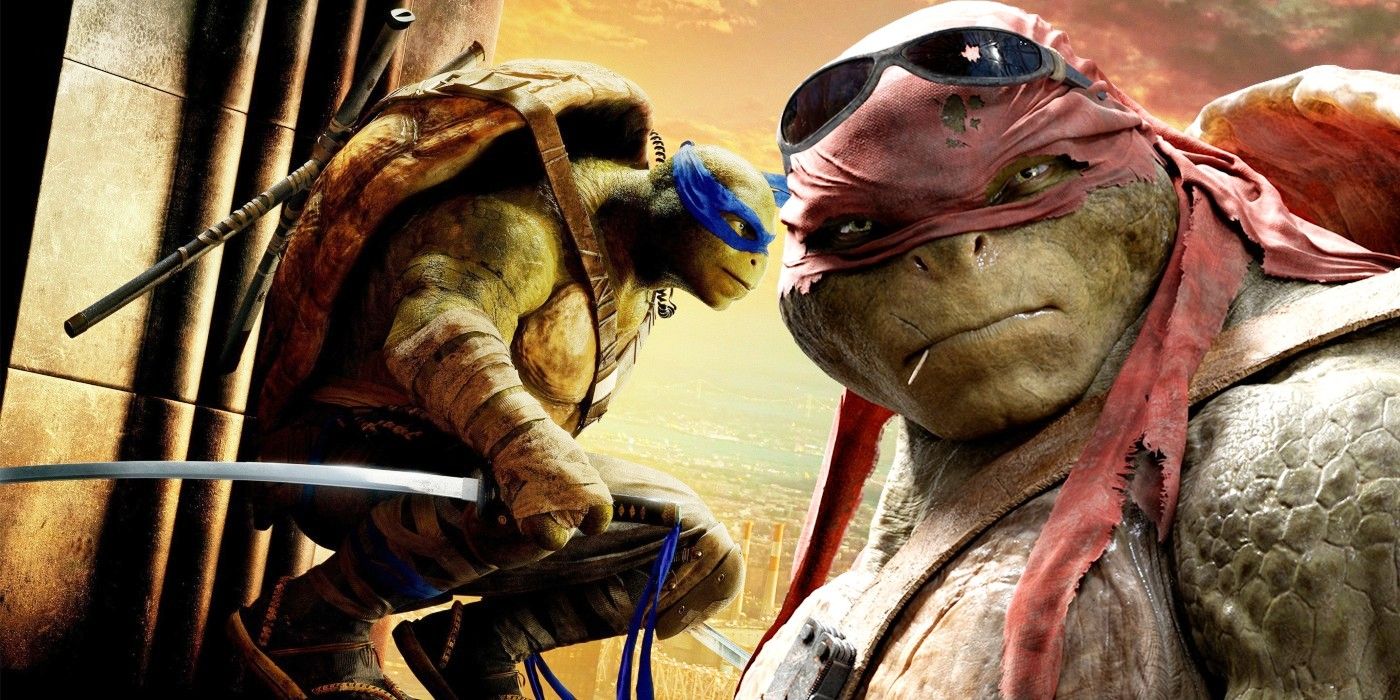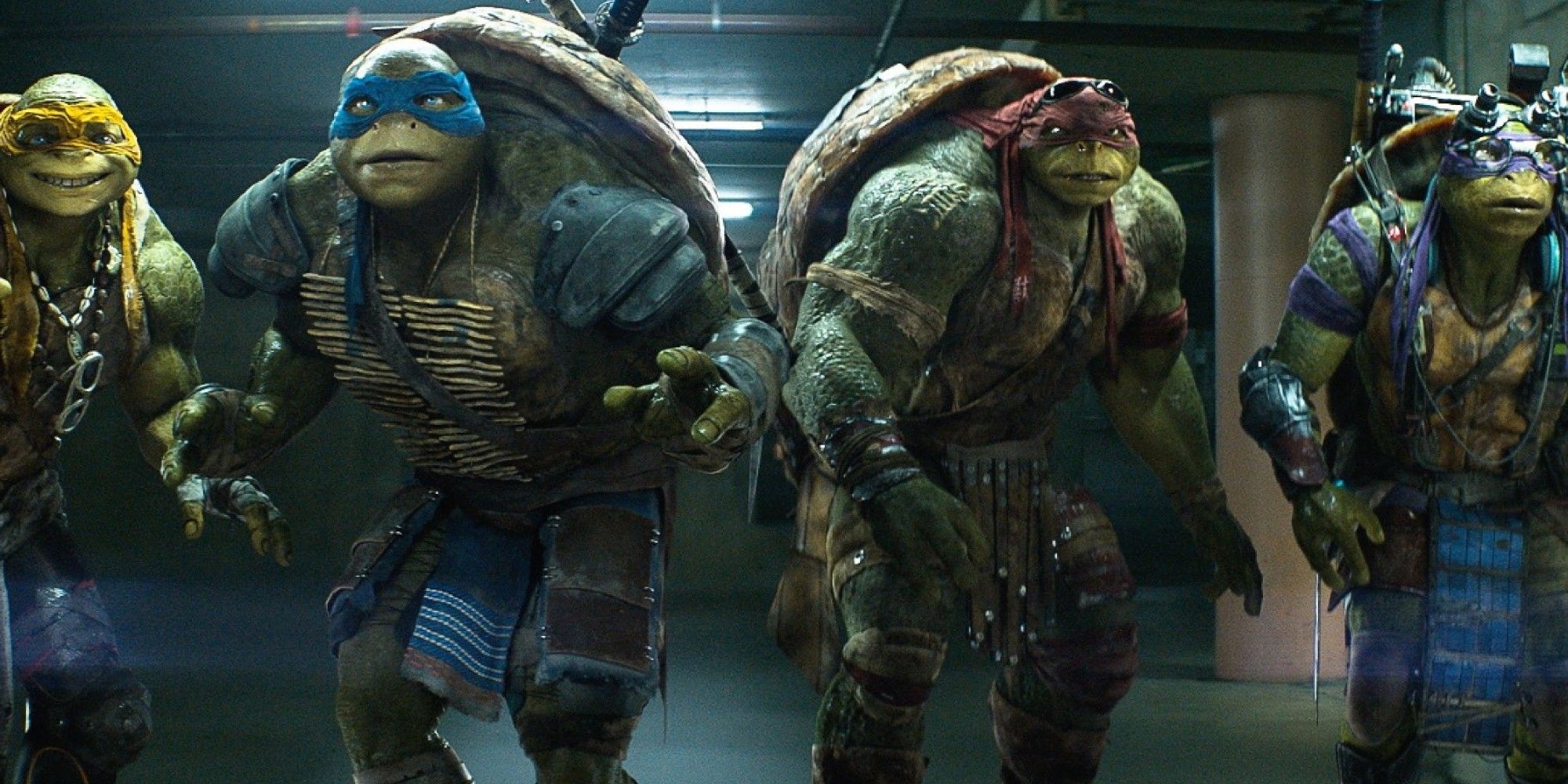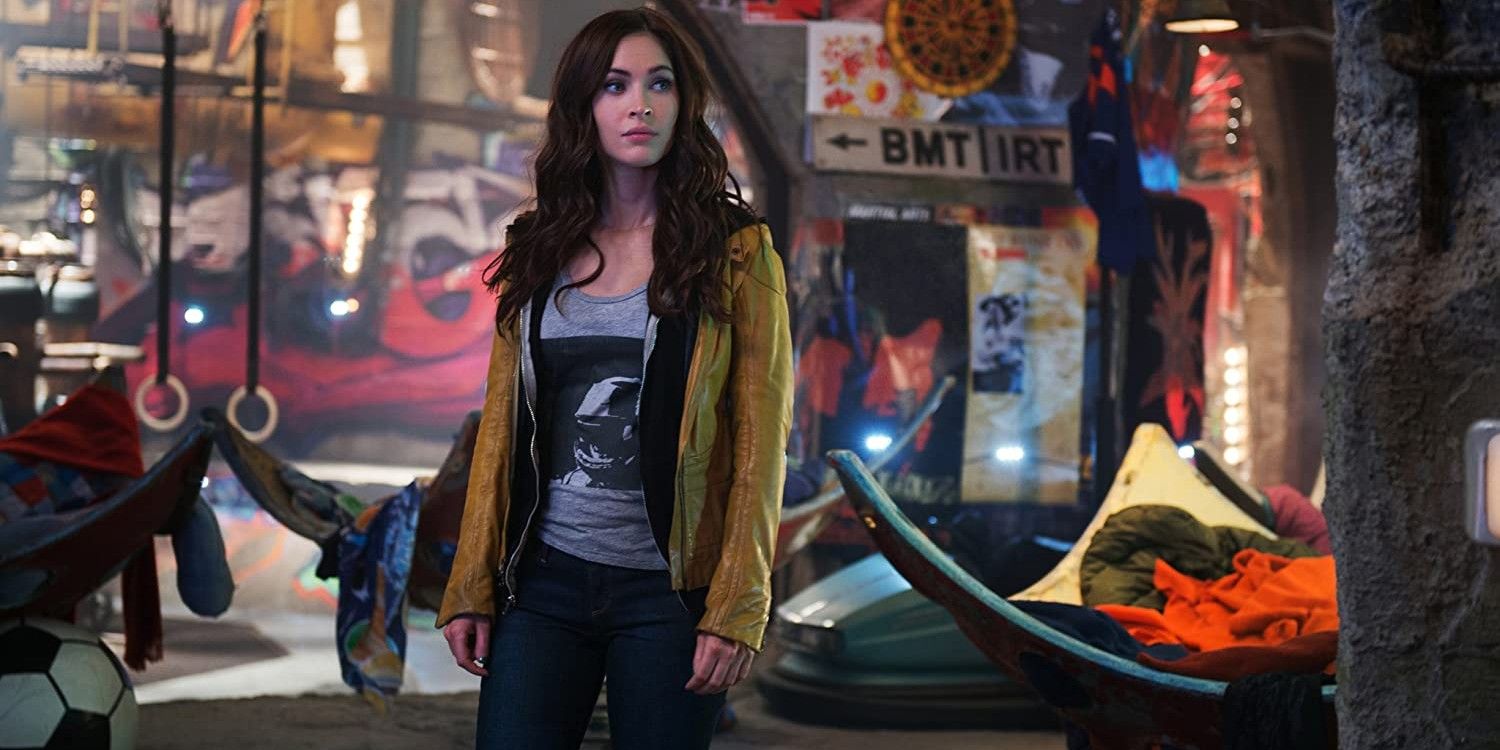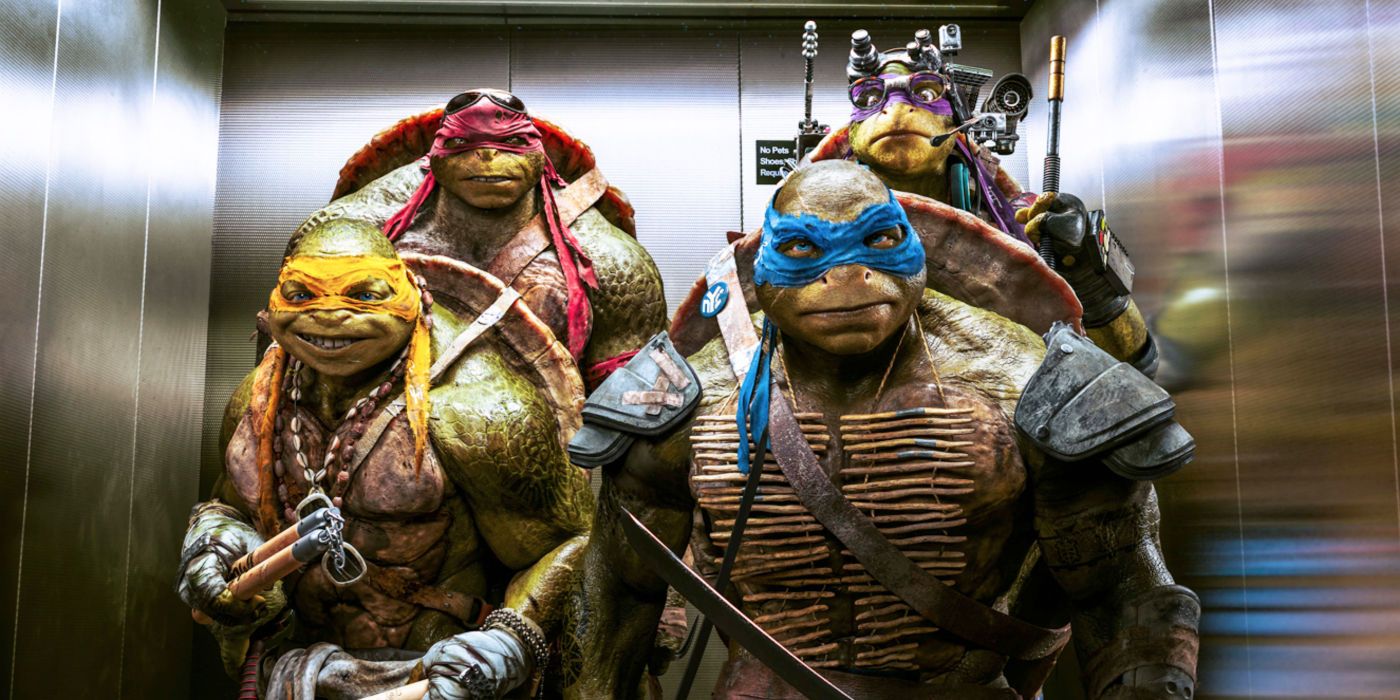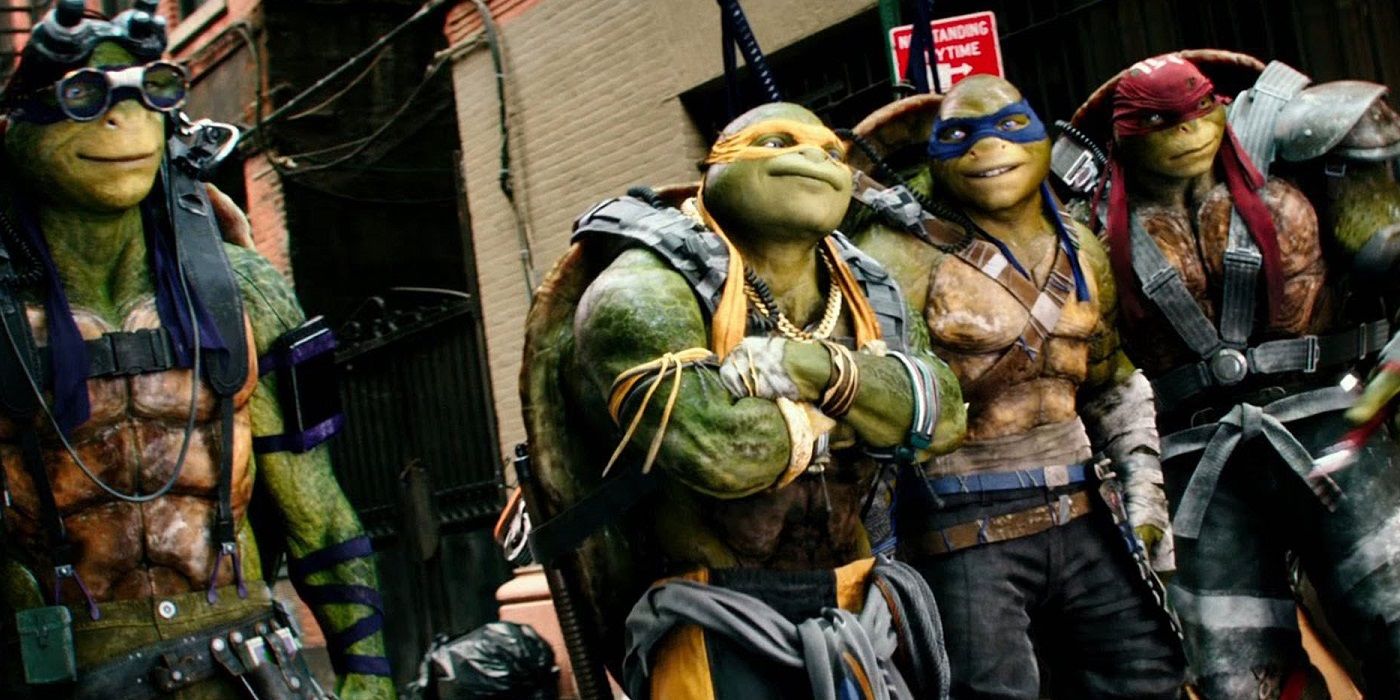Here's why the Michael Bay-produced Teenage Mutant Ninja Turtles movies didn't work. Love him or loathe him, few directors have shaped action cinema like Bay has since he left behind the world of commercials and music videos to go and make feature films in the 1990s. His storytelling style is so distinctive (rapid-fire cutting, sweeping camera shots, frequent explosions), it even has its own name: Bayhem. Others have tried to emulate his approach, but few have succeeded, resulting in blatant Michael Bay knockoffs like 2012's Battleship flooding theaters over the decades.
Recognizing his talents, Steven Spielberg reached out to Bay about directing a live-action movie based on the Transformers toys and cartoon series in 2005. After a bit of convincing, Bay signed on and the film hit theaters in 2007. While reviews were mixed, that didn't stop the original Transformers from becoming a massive hit for Paramount at the box office. So, when the studio acquired the rights to the Teenage Mutant Ninja Turtles franchise two years later, they didn't wait long to bring in Bay as a producer, in the hopes that he would work his magic again.
On paper, Bay's sensibilities aren't a terrible fit for the property. Certain iterations have been darker and more serious than others, but in general the '80s-born brand lends itself to his blend of juvenility and bombastic action. In spite of this, 2014's Teenage Mutant Ninja Turtles failed to scale the same heights at the box office as Bay's Transformers had, and didn't exactly wow audiences (earning a B CinemaScore), much less critics. Its sequel, Out of the Shadows, then tried to course-correct the series by adding several fan-favorite characters to the mix two years later. It didn't work, however, and the film made just under half of what its predecessor did in theaters. Today, we're looking at what went wrong.
Bay's TMNT Movies Kept Trying (& Failing) to Please Fans
Even before its release, it seemed the Teenage Mutant Ninja Turtles reboot was doomed to irritate fans of the property. The controversy heated up in March 2012, when Bay announced the Turtles would be members of an alien race in the film. He walked back his comments in the wake of the ensuing backlash online, and confirmed the idea had been abandoned after an early script draft by Josh Appelbaum and André Nemec leaked online later that year. Then, controversy reared its head again when Transformers star Megan Fox was cast as the hotshot reporter April O'Neil, a role that longtime TMNT creatives like co-creator Peter Laird felt she didn't make sense for. Her involvement was subsequently overshadowed by William Fichtner being cast as Eric Sacks, a character who was originally meant to become the movie's version of The Shredder, in what many fans saw as an attempt to whitewash the traditionally Japanese antagonist.
This plot point was later changed during reshoots, which cast Tohoru Masamune to play the true Shredder and made Sacks his adopted son instead. The storyline feels distinctly tacked-on in the final movie, and the reboot as a whole plays out as an uneven stitch-work of ideas from either earlier script drafts, principal photography, or post-production. In that light, Teenage Mutant Ninja Turtles acts as a cautionary tale about why creatives are better off committing to their vision when re-imagining a beloved property, rather than continually changing it in an attempt to please fans. When this doesn't happen, you get something narratively jumbled and uninspired like that film.
Bay's TMNT Movies Didn't Know What to Do With Their Characters
Hoping to produce a better outcome, Bay's Teenage Mutant Ninja Turtles sequel, Out of the Shadow, aspired to be a more faithful take on the franchise right out the gate. It appeared to be heading in the right direction during casting, with Arrow star Stephen Amell signing on to play the human vigilante Casey Jones, Brad Garrett lending his voice to the power-hungry extraterrestrial Krang, and Gary Anthony Williams and wrestler Sheamus playing the mutated henchmen Bebop and Rocksteady. Even Tyler Perry's unexpected casting as Baxter Stockman felt like an inspired choice for the over the top mad scientist. On top of all that, Brian Tee was brought aboard to play The Shredder in a far more substantial role than the character had in the 2014 movie, and there was hope the sequel would allow Fox as April to do more in the way of actual journalism and investigative work this time.
The general consensus is Out of the Shadows is better than its predecessor, yet it still struggles to do anything meaningful with its many characters or balance out their screen time. Far too often, the humans (like April) feel inconsequential to the story, and once again The Shredder is stuck playing second fiddle to the supporting villains around him, most notably the amusing but one-note Bebop and Rocksteady. There's also the matter of Amell's Casey Jones, a younger and more clean-cut version of the character who's robbed of most of the qualities that make him interesting and saddled with an arguably unnecessary origin story. In their defense, Bay's movies more or less nail the Turtles' personalities, yet even then the heroes in a half-shell are hurt from a character development standpoint from having so many other players to compete with for screen time.
Bay's TMNT Movies Couldn't Figure Out Their Tone
Prior to its release, Bay's Teenage Mutants Ninja Turtles was described as being a grittier take on the franchise. TMNT co-creator Kevin Eastman said the reboot was looking to the bone-crunching martial arts fights from modern action films like The Raid for inspiration, and both director Jonathan Liebesman and co-writer Evan Daugherty were known for making rougher genre fare like Battle: Los Angeles and Snow White and the Huntsman. The actual film plays out as more of a tonal mismatch, awkwardly shifting from straight-faced action and drama to zany humor (much of which involves objectifying Fox as April). As The Wrap's Alonso Duralde put it in his review, the movie "takes its characters and its premise seriously, until it doesn't, and that operates at two speeds: tortoise (ponderous) and hare (head-spinning)."
If the Teenage Mutant Ninja Turtles reboot tried too hard to be serious, Out of the Shadows director Dave Green went to the opposite extreme with his movie. The sequel has the frantic pacing and wacky comedy of an old-fashioned Saturday morning cartoon TV show; it works in fits, but becomes overwhelming when you combine it with the Bay-style bombastic set pieces and the sheer number of characters the film throws at the wall. Out of the Shadows might be more tonally consistent than its predecessor, but that only serves to highlight the absence of a cohesive vision and these movies' inability to decide whether they're geared more towards kids or teenagers.
The Turtles' Designs Didn't Work
As fantastic as the martial arts choreography is in the 1990 live-action Teenage Mutant Ninja Turtles film (and, to a lesser degree, its sequels), it's limited by the fact the Turtle performers could only do so much while wearing their bulky practical suits. By going with CGI rather than practical effects, Bay's reboot was able to better showcase the titular characters' athleticism and physical abilities. And unlike the Autobots and Decepticons seen in Bay's Transformers movies, the Turtles were played by their voice actors in motion-capture outfits on-set, giving them some real weight and allowing for more natural interactions between them and the rest of the cast.
Far less successful are the Turtles' designs. Shortly after being unveiled, the characters were turned into a meme comparing them to a photorealistic version of Shrek the ogre, and their appearance wasn't all that less unsettling in the final version. Even 30 years after the movie's release, the Turtles in the 1990 film look more like actual giant turtles (courtesy of the terrific costumes created by the Jim Henson Creature Shop) than they do in Bay's movies. This was such an issue with the 2014 reboot, Out of the Shadows included it as part of a subplot where the Turtles discover a way to turn themselves into humans using Krang's mutagen. The CG Teenage Mutant Ninja Turtles may be less limited in terms of their facial mannerisms, but it's the puppet Turtles' emotions that come through stronger.

